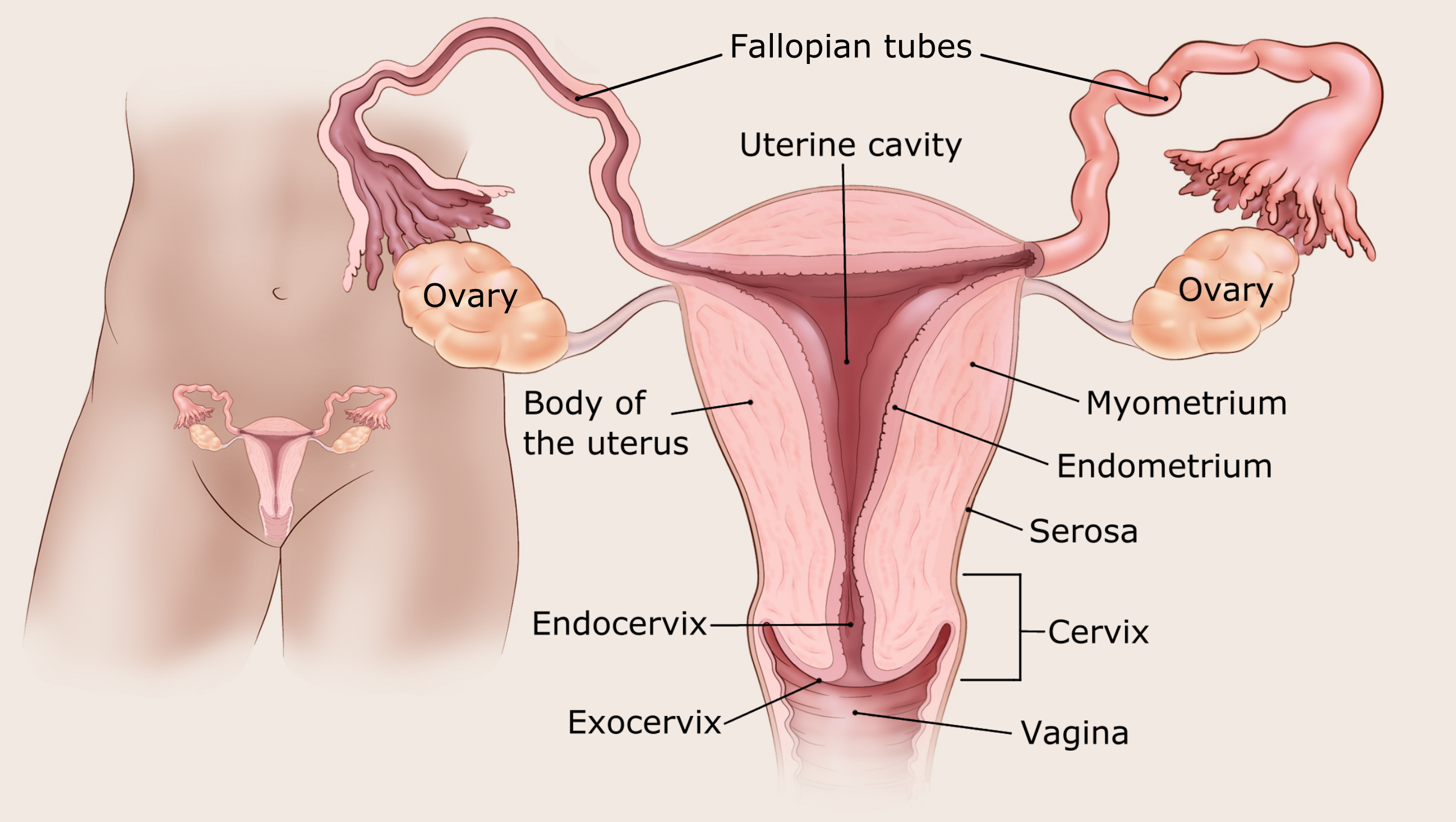What Is Uterine Sarcoma?
Cancer starts when cells in the body begin to grow out of control. Uterine sarcoma is a cancer that starts in the muscle and supporting tissues of the uterus (womb). Compared to other types of uterine cancers, uterine sarcomas are rare.
To learn more about how cancers start and spread, see What Is Cancer?

The uterus
The uterus is a hollow organ, normally about the size and shape of a medium-sized pear.
- The lower end of the uterus is the cervix, which sits above the vagina.
- The upper part of the uterus is the body, and is also known as the corpus.
The body of the uterus has 3 layers.
- The inner layer or lining is the endometrium.
- The serosa is the layer of tissue coating the outside of the uterus.
- In the middle is a thick layer of muscle known as the myometrium. This muscle layer is needed to push a baby out during childbirth.
Cancers of the uterus and endometrium
Sarcomas are cancers that start from tissues like muscle, fat, bone, and fibrous tissue (the material that forms tendons and ligaments). Cancers that start in epithelial cells, the cells that line or cover most organs, are called carcinomas.
More than 95% of uterine cancers are carcinomas. If a carcinoma starts in the cervix, it is a cervical carcinoma. Carcinomas starting in the endometrium, the lining of the uterus, are endometrial carcinomas. Information for these types of cancer is in Cervical Cancer and Endometrial (Uterine) Cancer.
Another type of cancer that starts in the uterus is called carcinosarcoma. These cancers start in the endometrium and have features of both sarcomas and carcinomas. These cancers were known as malignant mixed mesodermal tumors or malignant mixed mullerian tumors. Uterine carcinosarcomas are covered in Endometrial (Uterine) Cancer.
Types of uterine sarcoma
Most uterine sarcomas are put into a category, based on the type of cell they start in:
Uterine leiomyosarcoma (LMS)
These tumors start in the muscle layer of the uterus (the myometrium). They are the most common type. These tumors can grow and spread quickly.
Endometrial stromal sarcoma (ESS)
ESS tumors start in the supporting connective tissue (stroma) of the lining of the uterus (the endometrium).
ESS tumors are often given a grade which helps to understand how fast it’s likely to grow and spread.
- If the tumor is low grade, the cancer cells only look slightly different from normal cells and the tumor tends to grow slowly. Women with low-grade ESS tumors tend to have a better outlook (prognosis) than women with other kinds of uterine sarcomas. Most low-grade ESS tumors also have proteins called estrogen receptors (ER) and/or progesterone receptors (PR), like some breast cancers. Having these proteins often means certain hormone drugs can help treat these types of uterine sarcomas.
- A high-grade ESS tumor means the cancer cells look very different from normal cells, and the tumor is growing quickly. This type of ESS tumor is most often found when the tumor is already large and/or has spread. These tumors are often harder to treat.
Undifferentiated sarcoma
These cancers start in the endometrium or the myometrium. They grow and spread quickly and tend to have a poor outlook.
Adenosarcoma
This type of sarcoma has normal gland cells that are mixed with cancer cells of the stroma (supporting connective tissue). These are generally low-grade cancers and usually have a good prognosis (outlook).
Benign uterine tumors
Several types of benign (not cancer) tumors can also develop in the connective tissues of the uterus. These tumors, such as leiomyomas, adenofibromas, and adenomyomas are also known as types of fibroid tumors. In many people, these tumors don't need to be treated. But treatment may be needed if they start causing problems, like pelvic pain, heavy bleeding, frequent urination, or constipation.
In some cases, only the tumor is removed, leaving the rest of the uterus in place. This surgery is called a myomectomy. Other treatments destroy these benign tumors, by blocking the blood vessels that feed them, by killing the tumor cells with electric current, or by freezing them with liquid nitrogen.
Another option is to remove the entire uterus with a type of surgery called a hysterectomy.
- Written by
- References

The American Cancer Society medical and editorial content team
Our team is made up of doctors and oncology certified nurses with deep knowledge of cancer care as well as editors and translators with extensive experience in medical writing.
Alektiar KM, Abu-Rustum NR, and Fleming GF. Chapter 75- Cancer of the Uterine Body. In: DeVita VT, Lawrence TS, Rosenberg SA, eds. DeVita, Hellman, and Rosenberg’s Cancer: Principles and Practice of Oncology. 11th ed. Philadelphia, Pa: Lippincott Williams & Wilkins; 2019.
Boggess JF, Kilgore JE, and Tran AQ. Ch. 85 – Uterine Cancer. In: Niederhuber JE, Armitage JO, Doroshow JH, Kastan MB, Tepper JE, eds. Abeloff’s Clinical Oncology. 6th ed. Philadelphia, Pa. Elsevier; 2020.
Gaillard S and Secord AA. Staging, treatment, and prognosis of endometrial stromal sarcoma and related tumors and uterine adenosarcoma. In: Chakrabarti A and Vora SR, eds. UpToDate. Waltham, Mass.: UpToDate, 2021. https://www.uptodate.com. Accessed June 17, 2022.
National Cancer Institute. Uterine Sarcoma Treatment (PDQ)–Health Professional Version. Feb 10, 2022. Accessed at https://www.cancer.gov/types/uterine/hp/uterine-sarcoma-treatment-pdq
on June 17, 2022.
National Comprehensive Cancer Network (NCCN). NCCN Clinical Practice Guidelines in Oncology. Uterine Neoplasms, Version 1.2022 – November 4, 2021. Accessed at https://www.nccn.org/professionals/physician_gls/pdf/uterine.pdf on June 17, 2022.
Ricci S, Stone RL, Fader AN. Uterine leiomyosarcoma: Epidemiology, contemporary treatment strategies and the impact of uterine morcellation. Gynecol Oncol. 2017;145(1):208-216.
Last Revised: September 20, 2022
American Cancer Society medical information is copyrighted material. For reprint requests, please see our Content Usage Policy.
American Cancer Society Emails
Sign up to stay up-to-date with news, valuable information, and ways to get involved with the American Cancer Society.


